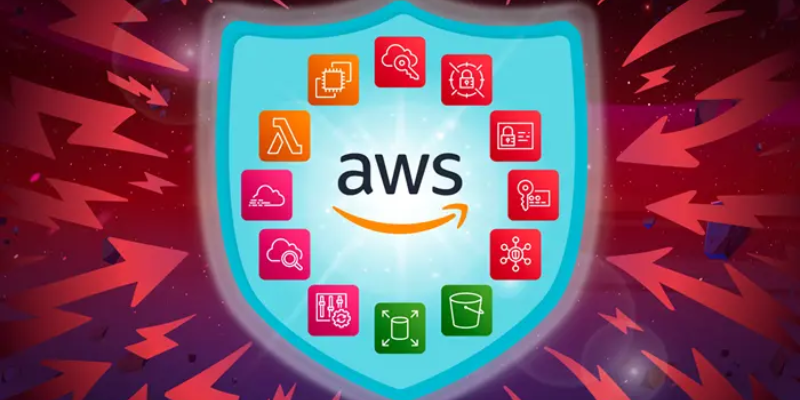Amazon Web Services is the world’s leading cloud platform, offering scalable infrastructure and services for everything from startups to global enterprises. However, with great power comes great responsibility securing your AWS environment is crucial to protecting sensitive data, ensuring compliance, and maintaining service availability.
While the features of AWS, such as scalability, global reach, and integrated security tools, offer immense advantages, improper configurations can expose businesses to serious security risks. As cyber threats evolve, AWS users must adopt a robust security posture that spans identity, network, data, and application layers.
This blog outlines key best practices to secure your AWS environment, covering account protection, network segmentation, encryption strategies, monitoring, and automation.
1. Use the Principle of Least Privilege
Start by restricting what users and applications can access:
- Rather of use the root account, create distinct IAM users.
- Assign only the permissions necessary for each user role.
- Use IAM roles for EC2 instances, Lambda, and other services avoid embedding long-term credentials in your code.
- Implement IAM policy conditions based on IP, time, and MFA presence.
Following the Principle of Least Privilege reduces the attack surface and limits the damage from compromised credentials.
2. Enable Multi-Factor Authentication (MFA)
By demanding a second form of authentication, MFA gives your AWS account an additional degree of security. It is highly recommended to:
- Enable MFA on the root account.
- Require MFA for all IAM users with console access.
- Use hardware or virtual MFA devices, such as Google Authenticator or YubiKey.
MFA is a foundational topic taught in the early stages of many AWS Training in Chennai programs.
3. Use AWS Organizations and Service Control Policies
When managing multiple accounts (e.g., development, staging, production), use AWS Organizations to structure and isolate environments. With Service Control Policies (SCPs), you can enforce permission boundaries across all accounts:
- Block risky actions (like deleting logs or disabling encryption).
- Prevent resource creation in disallowed regions.
- Enforce tagging policies for cost and access management.
These tools help centralize control and enforce compliance at scale.
4. Secure Your Network with VPC Best Practices
Use Amazon VPC (Virtual Private Cloud) to control your network environment:
- Place sensitive workloads in private subnets with no direct internet access.
- Use security groups (virtual firewalls) to allow only necessary inbound/outbound traffic.
- Implement network ACLs for stateless filtering across subnets.
- Use VPC endpoints to connect privately to AWS services without using public IPs.
- Leverage AWS Network Firewall and GuardDuty for threat detection.
By isolating resources and controlling traffic flow, you reduce the chance of lateral movement in case of compromise.
5. Secure Data While in Transit and at Rest
Encryption should be the default for both stored and transmitted data:
- Enable SSE (Server-Side Encryption) for S3 buckets using AWS-managed or customer-managed keys (via KMS).
- Encrypt EBS volumes, RDS instances, and backups.
- Use TLS/SSL for data in transit between services and users.
- Regularly rotate encryption keys and audit their usage.
These practices ensure that applications of AWS such as hosting customer data, financial transactions, or healthcare records remain protected.
6. Implement Logging, Monitoring, and Alerts
Visibility is key to security. Enable the following services for real-time monitoring and historical analysis:
- AWS CloudTrail: Logs API activity for your account.
- Amazon CloudWatch: Monitors metrics and sends alerts.
- AWS Config: Tracks configuration changes and evaluates compliance.
- Amazon GuardDuty: Detects suspicious behavior like port scans or anomalous logins.
- Security Hub: Centralizes findings from other AWS security tools.
Use these services together to establish a strong detection and response capability.
7. Protect Your S3 Buckets
S3 misconfigurations have been responsible for numerous data leaks. Secure your buckets by:
- Blocking public access unless absolutely necessary.
- Using bucket policies and IAM policies for fine-grained access control.
- Enabling S3 Access Logging to monitor usage.
- Applying object-level encryption and versioning.
- Setting up lifecycle rules to manage data retention and reduce costs.
S3 is secure by default, but a few clicks can make it insecure. Always audit your settings.
8. Automate Security with Infrastructure as Code
Using tools like AWS CloudFormation, Terraform, or CDK, you can define security best practices in reusable templates:
- Automate IAM role creation with proper permissions.
- Ensure encryption and logging are enforced at the time of resource deployment.
- Test configurations in a sandbox before pushing to production.
Automation ensures consistency, reduces human error, and speeds up response to security incidents.
9. Perform routine penetration tests and security audits
Periodic audits and testing help uncover misconfigurations and vulnerabilities:
- Use AWS Trusted Advisor for security recommendations.
- Schedule access reviews and rotate credentials.
- Perform penetration tests (with AWS approval) to test your defenses.
- Keep your environment up to date by applying security patches regularly.
Organizations often send teams to a Training Institute in Chennai to learn how to run these internal reviews effectively.
10. Educate and Train Your Team
Even the best tools fail without informed users. Conduct regular training sessions and ensure your team understands:
- IAM and permission boundaries
- How to recognize phishing attempts
- Incident response procedures
- Secure software development principles
Securing your AWS environment is not a one-time activity it’s an ongoing process that must evolve alongside your cloud infrastructure. From enforcing least privilege and enabling encryption to monitoring suspicious activity and automating with Infrastructure as Code, every layer of AWS offers tools for protection.
When applied consistently, these best practices ensure that your AWS workloads remain resilient, compliant, and secure. As more organizations adopt AWS for critical operations, mastering cloud security becomes essential.
